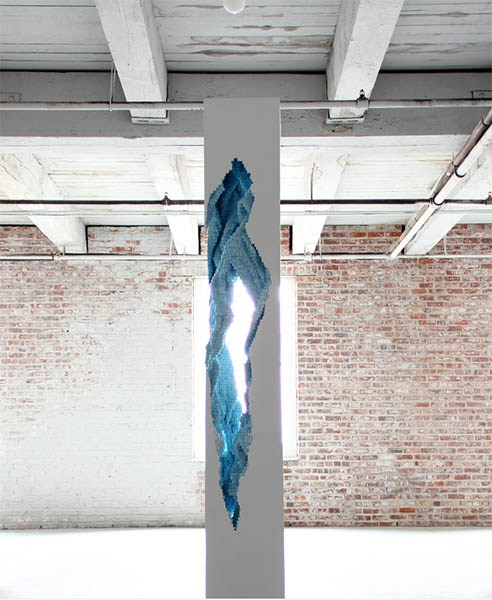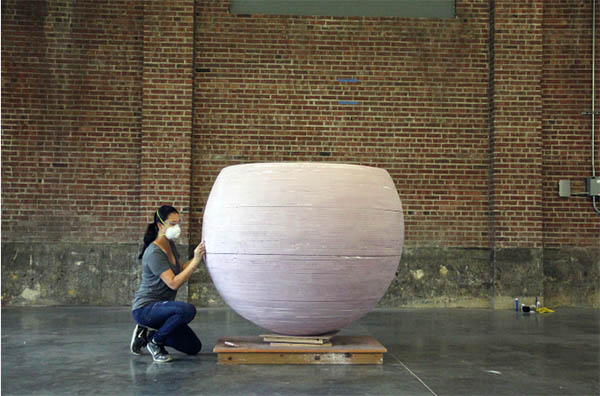
Vivian Chiu is a graduate of the Rhode Island School of Design’s furniture program. In a twist on the usual version of this story, the former high school athlete notes that this wasn’t her original plan: “I really wanted to study sports sciences, but my parents didn’t want me to do that. They thought that going into art would be a more viable career somehow.”
So, she ended up following in the footsteps of family members like cousins who had attended RISD, where she first encountered woodworking. “They started with the basics and then kind of advanced into things like steam bending, things like that. We did also learn metal and plastic and upholstery and stuff, but I always wanted to go back to wood,” Vivian said.
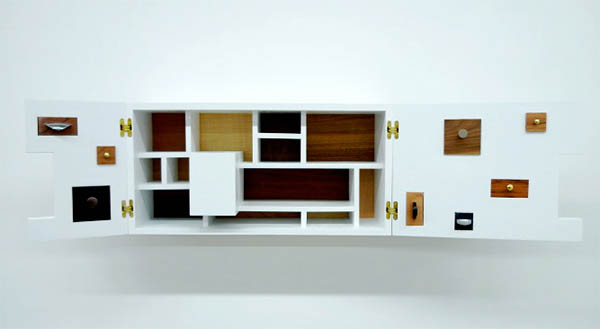
“I always say that wood is the most accurate material that I like working with,” Vivian explained. “I can get 90 degrees on a cut, an exact measurement, versus when you work in metal, you have to Sharpie it, and that Sharpie line is kind of thick, so it’s not as accurate as I would like. I don’t like things that would explode on me or melt in my hands or anything that turns from liquid to solid; it’s a bit too out of my control.”
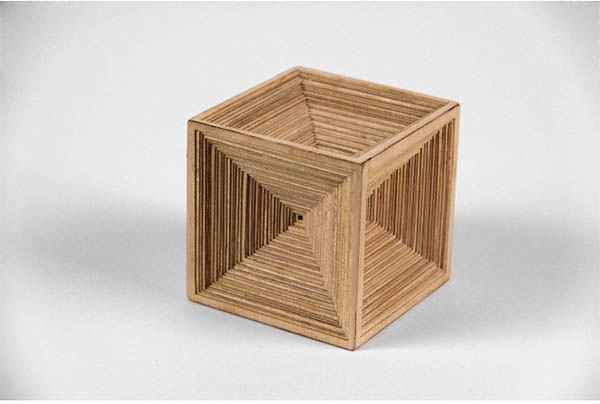
Control and accuracy is important to Vivian as she incorporates simple math and geometry rules into her projects. “So everything is increasing by 100 percent, or all prime numbers – something mathematical – and then I can kind of create these geometrical sculptures that I can cut up and reform.” The grooves in INCRA rules, she mentions, help make her marking and math easier.
Vivian’s focus on sculptural work came about after her graduation from RISD and can be traced to an undergraduate furniture project that, in some ways, was more of a success than she wanted it to be. As a senior in college, she was assigned a chair project and was having a difficult time coming up with a concept. “So I started doodling these squares, like a square within a square, then a square that’s a little bit bigger, then a square that’s a little bit bigger. And I turned to my friend next to me and said, “What if I make a chair within a chair, kind of like the movie Inception, how it’s a dream within a dream?’ And she was basically like, ‘Yeah, cool,try it.’”

Vivian says she never made any full drawings of the project that became “Inception Chair,” just orthographic drawings for the measurements. To retain the proportions of the grooves, she cut everything by hand.
“And then it came out; I had no idea it was going to look like that, and it was one of those ‘You’ve got something on your hands, something special here,’ kind of moments.”
She got quite a few people interested in buying the chair – until they realized that, due to the fragility of the smallest chair, you couldn’t sit on it. “And so I realized that I don’t want to make furniture, because I don’t want to make things that people can break, or that relies on its function for its appeal.”
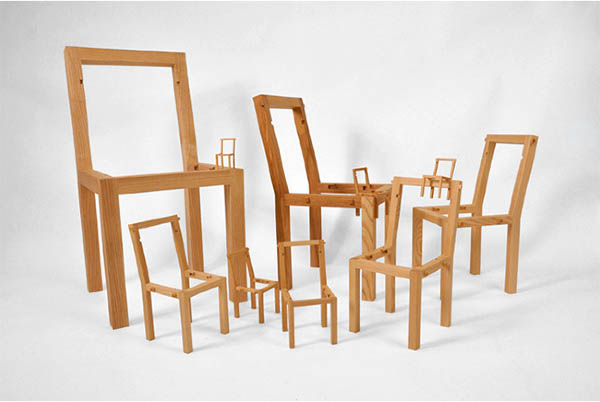
So, post-graduation, Vivian has focused her efforts on sculpture – currently, she’s a student in the Columbia MFA program in sculpture and, in fact, will be having her first-year show of her work at New York’s Lenfest Center this spring (opening is on March 23; exhibit on display until April 9).
She worked for a while for sculptor Ursula von Rydingsvard while also participating in several residencies, including Anderson Ranch, Haystack Mountain School of Crafts, Penland School of Crafts, Bemis Center for Contemporary Arts and Houston Center for Contemporary Craft. This summer, she’ll be at the Center for Art in Wood in Philadelphia.
“I’m always basically just trying to look for somewhere that has a table saw and has a chop saw, and just continue making,” Vivian said. “That’s really the most important thing to me, is to make. I can’t be away from my studio for too many days because I kind of get itchy hands, itchy fingers.”
The woodshop space is the most important aspect to her when applying for residencies, Vivian said, because, “That’s the most expensive part of being a woodworker, is having all the tools.”
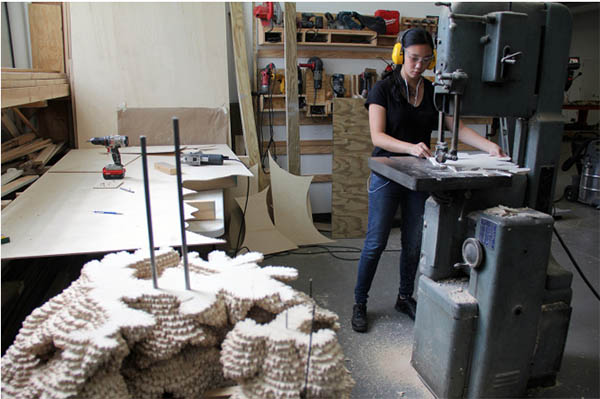
She has made do at times, however, when she didn’t necessarily have the tools she wanted: “I always carry a mini band saw around with me, because it’s so cheap,” she said. Some of her works, like small busts and some in the “Relief” series, were created with that mini band saw. And, when she wanted to scale up for “Sphere” and “Pillar,” she mounted a jigsaw upside down on a table and attached a foot pedal. “So when I pulled the pedal, it would kind of cut upward.”
She originally planned to use wood for that project, “But there was too much bounce when the jigsaw was cutting it, so I ended up using foam.”
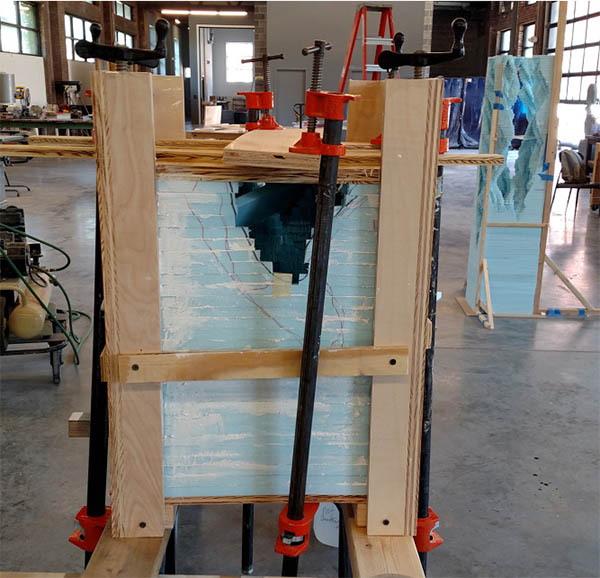
The wood she’s working with the most right now is Baltic birch plywood – in part, for financial reasons. (“Probably, if I had unlimited money, I’d be working with walnut,” she said.) But the quarter inch Baltic birch plywood also plays into her design aesthetics when she laminates separate layers together. “It has to be equal layers, so when I stack them together, all the lines are equal spacing apart,” she said. “I’m interested in how many layers that are just a tiny bit different can change an entire form of a piece. “
![]()
Currently, Vivian is working on a series of “staircases.” “I’m dissecting them, I’m cutting them up, shifting them, putting them back together, chopping them up again, shifting them and moving them. It sort of creates a lot of physical layers, but also conceptual layers of the process in the work.”
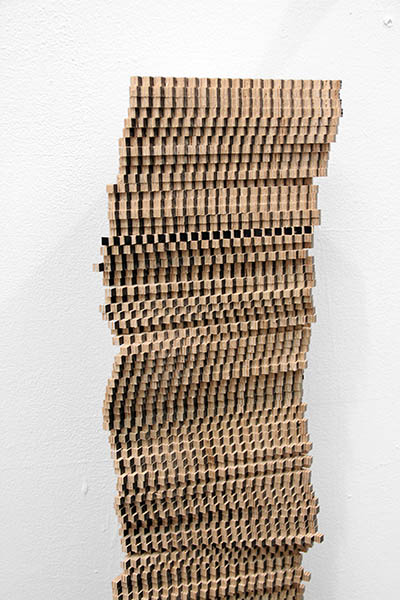
She has also recently begun experimenting with painting her wood – but only in black and white. In the past, Vivian said, she has often picked her woods based on the lightness or darkness of the species, and left the wood raw. As for the reasoning behind painting in black and white? “I just say it’s the same reason why people photograph in black and white: it’s just kind of easier to separate two things when color’s not involved.”
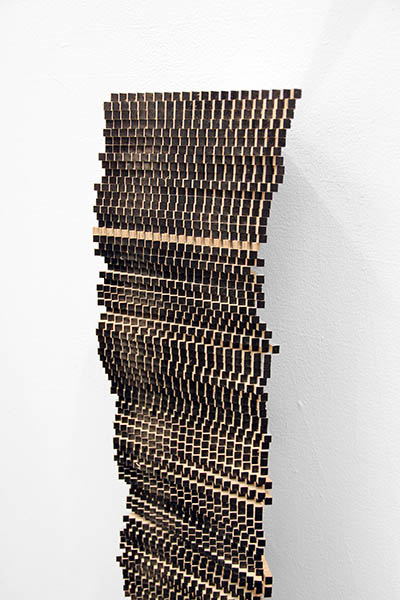
She also notes that she’s working optical illusions-based sculptures, “Where I’m painting one side, and not the other, so when you move around it, you kind of get different colors and shapes.”
Vivian does, at times, incorporate materials other than wood into her work, including metal or clay, sometimes due to the weight of a larger scale work, or sometimes to “play around doing things that I think might look interesting or feel interesting – but it always starts with wood.”
